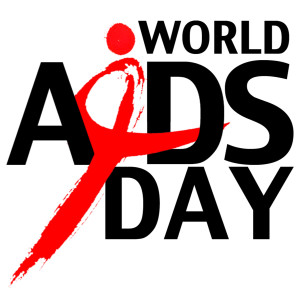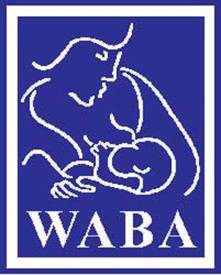WABA World AIDS Day Statement
27 November 2015
Breastfeeding: Getting Close to Zero for an AIDS-free generation
 Thirty years since the first report appeared documenting transmission of the Human Immunodeficiency Virus (HIV) through breastfeeding[1], breastfeeding by HIV-Positive mothers has never been as safe as it is now in 2015. So long as several easily achievable conditions are fulfilled, the risk of transmission of the virus through mother’s milk can be reduced to almost zero (0-1%)[2][3][4].
Thirty years since the first report appeared documenting transmission of the Human Immunodeficiency Virus (HIV) through breastfeeding[1], breastfeeding by HIV-Positive mothers has never been as safe as it is now in 2015. So long as several easily achievable conditions are fulfilled, the risk of transmission of the virus through mother’s milk can be reduced to almost zero (0-1%)[2][3][4].
Breastfeeding remains of crucial importance to the health of HIV-exposed infants since non-breastfed babies experience higher rates of illness and mortality [5][6]. A recent study shows that the improved immunological and nutrition status enjoyed by breastfed, HIV-exposed infants is especially protective against pneumonia, diarrhoea and sepsis, leading to reduced hospitalisation during the first year of life [7]. Two studies have also shown that when these babies have been exclusively breastfed for 6 months and continue to be breastfed while their mothers adhere to their ART, there is no increased risk of transmission up to 12 months [8][9].
Breastfeeding by HIV-Positive mothers can be made safe when they:
- are diagnosed before or during early pregnancy.
- have received full antiretroviral therapy (ART) for at least 13 weeks prior to the birth of their babies.
- have an undetectable viral load.
- are adherent to their ART.
- administer prescribed antiretroviral prophylaxis to their babies from birth to 4 weeks to protect from virus acquired at birth
- practise exclusive breastfeeding during their babies’ first 6 months of life.
- continue breastfeeding with appropriate complementary foods for up to a year, or even longer, unless or until safe replacement feeding would enhance HIV-free survival.[10]
The importance of exclusive breastfeeding for the first six months of life, and continued breastfeeding for up to two years or beyond, in accordance with current WHO recommendations[11], cannot be too highly stressed. The evidence for promotion of breastfeeding for all babies continues to grow. This month’s special issue of the medical journal Acta Paediatrica contains a summary and ten separate review articles, coordinated by the World Health Organisation,[12] on different aspects of breastfeeding. Topics as diverse as how breastfeeding leads to reduced mortality, higher intelligence, improved growth, lower cholesterol, lower blood pressure and a reduced risk of type 1 diabetes in later life, lower incidence of asthma, allergies, malocclusion, dental caries and otitis media are fully discussed. The series ends with modules outlining how breastfeeding improves the health of women, and how to provide effective interventions to make breastfeeding easier.
Current WHO recommendations suggest that ART should be initiated in all individuals who test HIV-positive, including pregnant and breastfeeding women living with HIV regardless of WHO clinical stage and at any CD4 cell count and continued lifelong[13] [14]. Effective antiretroviral treatment, currently available in most settings, can greatly reduce the infectivity of HIV-positive individuals, and antiretroviral prophylaxis is effective in protecting transmission of the virus between sexual partners and between mothers and their children. Thus girls and young women can be protected from primary infection with HIV and infants of already-infected mothers can be protected from transmission during pregnancy, during birth and during breastfeeding. However, fear of stigmatisation often leads to weak adherence to antiretroviral treatment. Outdated beliefs about the benefits of artificial feeding for HIV-exposed infants, coupled with fear of disclosure of their HIV status if they do not breastfeed, means that many HIV-Positive women will bottle-feed in secret at home, but breastfeed in public, which means that too many HIV-exposed babies are mixed-fed. Mixed feeding places babies at the greatest risk of HIV-transmission.
It can be seen that effective treatment with antiretroviral drugs transforms HIV from a lethal to a chronic disease, but fear, stigmatisation and gender inequality issues are now driving the spread of HIV. Greater acceptance of people living with HIV and better understanding of HIV by society in general will be necessary to tackle current stigma. With sufficient political will, there can be virtually zero transmission of the virus from mothers to their children, including through breastfeeding, meaning that achievement of an AIDS-free generation is finally within the grasp of the global community.
References
[3] Morrison P, Greiner T, Israel-Ballard K. Informed choice in infant feeding decisions can be supported for HIV-infected women even in industrialised countries. AIDS, 2011; 25:1807–1811.
[5]Coutsoudis A, Coovadia HM & Wilfert CM, HIV, infant feeding and more perils for poor people: new WHO guidelines encourage review of formula milk policies, Bulletin of the World Health Organisation,2008;86:210–214.
For more information, please contact:
WABA Liaison Person:
Pei Ching
peiching.chuah@waba.org.my

Pingback: World AIDS Day 2015 - LCGB()
Pingback: World AIDS day: breastfeeding and HIV-positive mothers (Indicator 8 WBTi) | Breastfeeding trends (UK)()